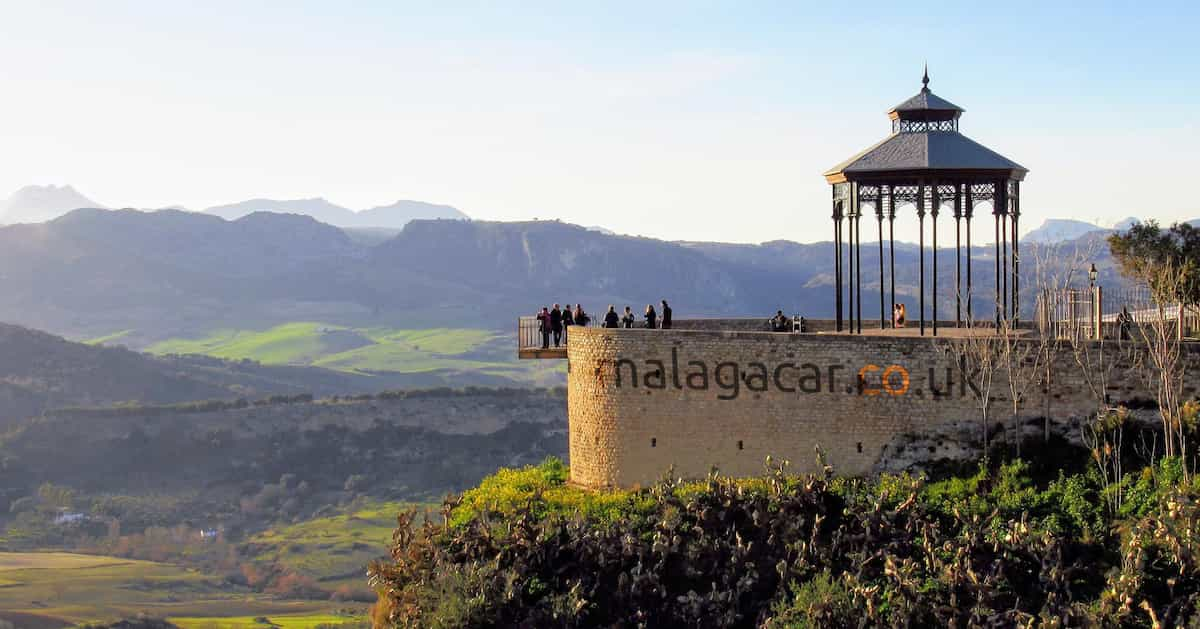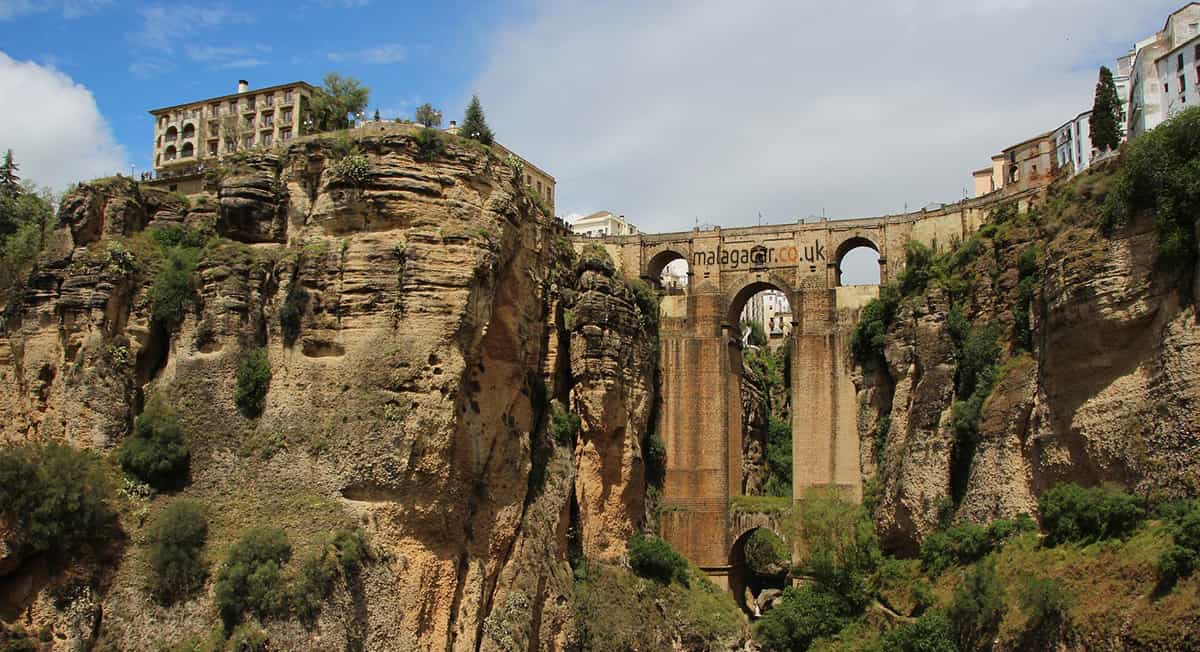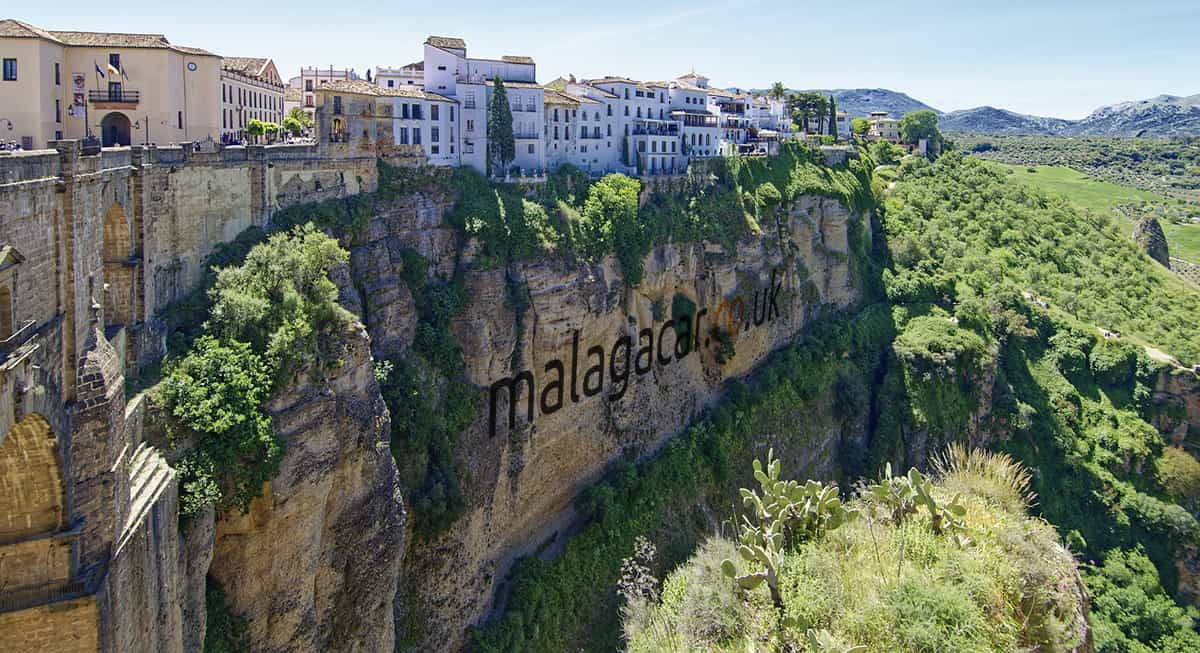Ronda is a picturesque town located in the province of Malaga, within the autonomous community of Andalusia, Spain. Known for its cliffside location and deep canyon that carries the Guadalevin River, Ronda is a unique destination that offers breathtaking views and rich history.
One of Ronda’s most iconic landmarks is the Puente Nuevo, or “New Bridge,” which spans the deep canyon and connects the old Arab Medina with the Mercadillo neighbourhood. This stunning bridge offers incredible views of the surrounding landscape and is a must-see for any visitor to Ronda.
From its prehistoric settlements to its Roman origins, Ronda has been shaped by a diverse range of cultures and influences. Whether you’re interested in exploring Ronda’s historic landmarks or simply taking in the stunning scenery, this charming town has something for everyone. Stay tuned for more information on Ronda’s history, attractions, popular festivals, cuisine, and how to get there from the airport.
History
Ronda is one of the oldest towns in Spain, with evidence of prehistoric settlements dating back to the Neolithic period. The town was first settled by the Celts in the 6th century BC, who gave it its original name of Arunda.
Later, Phoenician settlers established themselves nearby and founded Acinipo. The current Ronda is of Roman origins, having been founded as a fortified post during the Second Punic War. In the 5th century AD, Ronda was conquered by the Suebi and later reconquered by the Eastern Roman Empire.
Ronda was part of the Visigoth realm until 713 when it fell to the Umayyad troops and became the capital of the Takurunna province. After the disintegration of the caliphate of Cordoba, Ronda became the capital of a small kingdom ruled by the Berber Banu Ifran. During this period, Ronda gained most of its Islamic architectural heritage.
The Islamic domination of Ronda ended in 1485 when it was conquered by Rodrigo Ponce de Leon after a brief siege. Subsequently, most of the city’s old edifices were renewed or adapted to Christian roles.
Acinipo
Acinipo is an archaeological site located near Ronda, Spain. The site features various excavated areas, including a majestic Roman theater and remains of Iron Age huts. The site is situated in a privileged location with unbeatable views. Visitors can observe eagles soaring over the Roman theater and enjoy the calm and tranquility of the area.
The site is open to the public for free, self-guided visits from Wednesday to Sunday in the morning. Guided tours are also available for free, but must be requested in advance through the Junta’s website. The site has limited opening hours and is closed on Mondays and Tuesdays. There is a parking lot outside the site and a public bathroom at the entrance.
The city has been known since ancient times as “Ronda la Vieja” because it was considered to be the old settlement of this city. The reality is that both cities, Acinipo and Arunda (the current Ronda), coexisted at the same time.
Acinipo declined throughout the 3rd century AD. In the 4th century, this urban center lost its importance in the area, with hegemony in the surrounding territory passing to Arunda (the current Ronda). According to recent research and the discovery of ceramic remains at the site, the city may have been uninhabited no earlier than the 7th century
Attractions in Ronda

Ronda’s rich history is reflected in its many historic landmarks and monuments. For example, you can visit La Ciudad (the old Arab Medina), which contains many well-preserved examples of Islamic architecture. You can also explore El Mercadillo (the street market), which developed to the west of La Ciudad and saw considerable expansion during Christian times. This impressive natural feature is one of Ronda’s most iconic landmarks.
In addition to its natural beauty, Ronda is also home to a wealth of historic attractions and monuments. Here are some of the must-see sights in Ronda:
- The historic bullring, which includes a bullfighting museum (Map)
- Church of Santa María la Mayor (Map)
- The Town Hall, with its beautiful balcony (Map)
- The minaret tower of San Sebastián (Map)
- Palaces such as El Mondragón (Map), La Casa del Rey Moro (Map), and El Salvatierra (Map)
- The well-preserved ancient Arabic baths (Map)
- The gates of the old walls, including the Arabic Almocabar gate (Map) . Felipe 5 arch (Map), Wind Gate (Map) and the Renaissance Carlos V gate (Map)
- Old Walls (Map)
- Alameda del Tajo and New Bridge (Map)
- Lookout point (Map)
- Old Bridge (Map)
- Fountains such as Los Ocho Canos (Map)
- Gates such as Felipe V (Map)
Bullring

The Plaza de Toros in Ronda is a popular attraction that is considered a must-see for visitors to the town. The bullring’s history traces back to the order of horsemanship, the Real Maestranza de Caballería de Ronda, founded in 1485 when the Catholic Monarchs Isabella and Ferdinand reconquered Ronda from the Moors, ending over 7 centuries of Islamic rule. Construction of the bullring started in 1779 and finished in 1785.
Located near the Paseo del Tajo, the exterior of the bullring is impeccably white and features sculptures of famous bullfighters who have performed there. Visitors can take a self-guided tour of the bullring, which includes the corrals, riding arena, and museum. The museum displays images and information about the history of the place, its traditions, and typical costumes.
The bullring is beautifully maintained and offers stunning views. Some visitors recommend viewing it from the terrace of the Catalonia hotel while enjoying a coffee.
Overall, visitors highly recommend a visit to the Plaza de Toros in Ronda. Even those who are not fans of bullfighting appreciate the beauty and history of this iconic landmark. The entrance fee is 9 euros per person.
New Bridge

The Puente Nuevo, or “New Bridge,” is the most iconic monument in the city of Ronda. Its construction began in 1751 and was completed in 1793. The bridge spans the 120-meter-deep chasm that carries the Guadalevín River and divides the city of Ronda.
Inside the bridge, there is a chamber above the central arch that has been used for a variety of purposes, including as a prison. During the Spanish Civil War, both sides allegedly used the prison as a torture chamber for captured opponents. The chamber is entered through a square building that was once the guard-house. It now contains an exhibition describing the bridge’s history and construction.
The Puente Nuevo is not only a feat of engineering but also a work of art. Its design blends seamlessly with its surroundings, creating the impression that the bridge is part of the natural landscape.
Visitors can enjoy stunning views of the bridge from various vantage points around the town. It is also possible to take a tour inside the bridge by purchasing a ticket.
Old Bridge
The origins of the bridge are not clear, and there is no documentation to clarify it. Some believe it was originally built by the Romans and later reconstructed by the Arabs. However, most consider it to be of Arab origin. Lozano tells us that it was built during the time of Amobelique, and Moreti adds that it was improved during the reign of Muhammad III of Granada, whose minister was from Ronda.
After the conquest, the bridge must have been destroyed and urgently repaired. In 1486, King Ferdinand ordered Juan de Torres, then governor of the fortress, to build a bridge in Ronda. For this work, he asked for help from delinquents who were skilled masters from Urtabiega.
The work did not progress quickly, as Bachiller Serrano tells us about its delay and mentions a certain Juan de Santiago who was supposed to build it.
Ronda City Gates
Ronda’s city walls and gates played an important role in the town’s history, providing protection from attack. The walls, in combination with the gorge and Guadalevín River, made Ronda impervious to attack until the age of the cannon.
Most of the stone walls around Ronda were built during the Islamic era, which lasted from 712 until 1485. As the city expanded towards the Barrio de San Francisco and the former Jewish Quarter, extra walls were built. Consequently, many existing walls around Ronda never joined up. In fact, they were originally part of separate encircling rings that no longer exist.
One of the most critical gates to defend was at the city side of the Puente Arabe, which was the main road to Granada before the new quarter at Padre Jesus was developed in Christian times. As the main entrance to the city, two walls with towers converged at this point.
Hiking and nature
Ronda is a town that offers aesthetic enjoyment to visitors. In addition to its historic streets, the surrounding area of Ronda, located in “Humid Andalucia,” offers endless opportunities for exploration. The rugged mountainous landscape features peaks, caves, and deep cliffs, perfect for potholing. The Gesm fissure, for example, is considered the third deepest in the world at over 1,100 meters.

The area is also home to extensive forests of conifers, including the Spanish Fir tree, which can be found in the Natural Park of “La Sierra de las Nieves.” Other nearby natural areas include “Sierra Bermeja,” a refuge for Pine trees, and “Sierra Crestellina,” a paradise for Griffon vultures and other birds of prey. These places are sure to delight nature enthusiasts and those interested in rural tourism.
Some popular hikes in the area include the Molinos del Tajo trail, which takes you on a beautiful route around the town of Ronda and its famous 98-meter-high bridge, the Puente Nuevo. Another popular hike is the Puente Nuevo – Murallas de Ronda trail. This trail takes you on a circular route through Ronda’s historic center, passing by main monuments, tourist attractions, and historical areas.
For more experienced hikers, the SL-A 140 Quejigales – Torrecilla trail is a classic route to the well-known Malaga peak of La Torrecilla. This hike takes you through a true mountain landscape with diverse vegetation and some of the best views of the Sierra de las Nieves Natural Park.
Popular festivities
Ronda is a town with a rich cultural heritage and many popular festivals throughout the year. Some of the most notable festivals include:
- Fiesta de la Virgen de la Paz: This festival takes place on January 24th and celebrates the patron saint of Ronda.
- Semana Santa: Like all Andalusian towns, Ronda celebrates Holy Week with processions that wind through the streets and alleys of the old city.
- Ronda Romántica: This May fair event celebrates Ronda’s romantic past, particularly the 19th-century May Fair that was once known as the greatest festival in Andalusia. The event features concerts, markets, and craft fairs, with many locals dressing up in period costumes.
- Pedro Romero Fair: This famous festival is dedicated to the bullfighter Pedro Romero and features Goyesque bullfights, where matadors dress in 18th-century clothing. Locals also dress up in traditional attire for the event, which includes a horse and carriage show in the bullring.
How to get to Ronda by car
Remember that car hire in Malaga might be a good option for getting the most from your visit. If you already reserved your vehicle with us, you can follow the indications below for getting there:
- From the Costa del Sol, after passing Marbella, take the junction to the right, which leaves from San Pedro de Alcantara. From the crossing we find a wide road, two-way, with multiple curves; in his ascent from sea level we are discovering the mountain landscape until it reaches Ronda, with a distance of 50 km. Some natural sources allow us a break on the trip. Well-placed lookouts encourage us to admire and photograph a spectacular panorama. It is the longest route, but the most attractive for tourists.
- From El Burgo, is the shortest road from Malaga (90 km), but it is narrow with many curves. The route from the capital is towards Coin (either by Campanillas, Cártama or Alhaurín de la Torre, Alhaurín el Grande), Alozaina, Yunquera..
- From Ardales: This route is the best choice for its 100 km mileage, tranquility, and asphalt. It’s a dual circulation road used by people from Ronda to go to Malaga. The route goes from Malaga towards Campanillas. The first stretch is a motorway and the second stretch has refurbishment works. We continue until the junction of Ardales and drive along the bypass of this town. Then we take the junction that leads to Ronda passing by Cuevas del Becerro.
Find below the road routes from Malaga airport:
